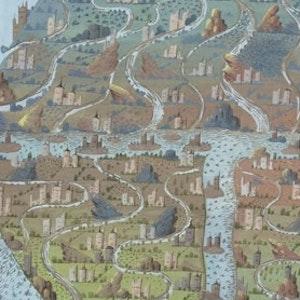-
-
what is a complex system?
-
expectations/requirements
-
-
-
please read this first
-
-
-
please read this first
-
templates
-
-
-
letters of recommendation
-
2.2 appeal of complex systems » 2
I found out about SFI when I was fourteen and instantly knew I wanted to go there. It was what I had been looking for: an interdisciplinary team of scientists using a wide range of quantitative techniques to study ambitious theoretical topics. Finally, people seemed to be asking the “big” questions! Why is there life? Where did it come from? Can we predict how life will change in the future? How do languages evolve? How do societies change? Can we use the same laws we use for organisms on human civilizations? My list goes on.
What do people, animals, cities, and languages have in common? They’re complex. At SFI, scientists ask, why is there complexity at all and what are the quantitative laws of nature that govern complexity? A rudimentary understanding of thermodynamics and statistical mechanics suggests there shouldn’t be any complexity. Everything should just be a uniform pile of uniform mush. But it’s not! Somewhere in the laws of physics there is room for all of this complexity: at least four separate instances of the evolution of flying, a species collectively smart enough to build computers that fit in their pockets, the stars that we see in the night sky and have questioned for millennia, and so much more.
I remember realizing that I would love to spend my life trying to answer the questions that SFI asks. I’ve since decided to become a physicist because I love creating mathematical models of the real world. Yet I’ve always known I want to study the laws of nature that created elephants and Shakespeare and people, not just the value of the voltage inside a box. That’s why I want to do research at SFI, because the scientists there want to find the overarching patterns in all the disciplines that fascinate me.
